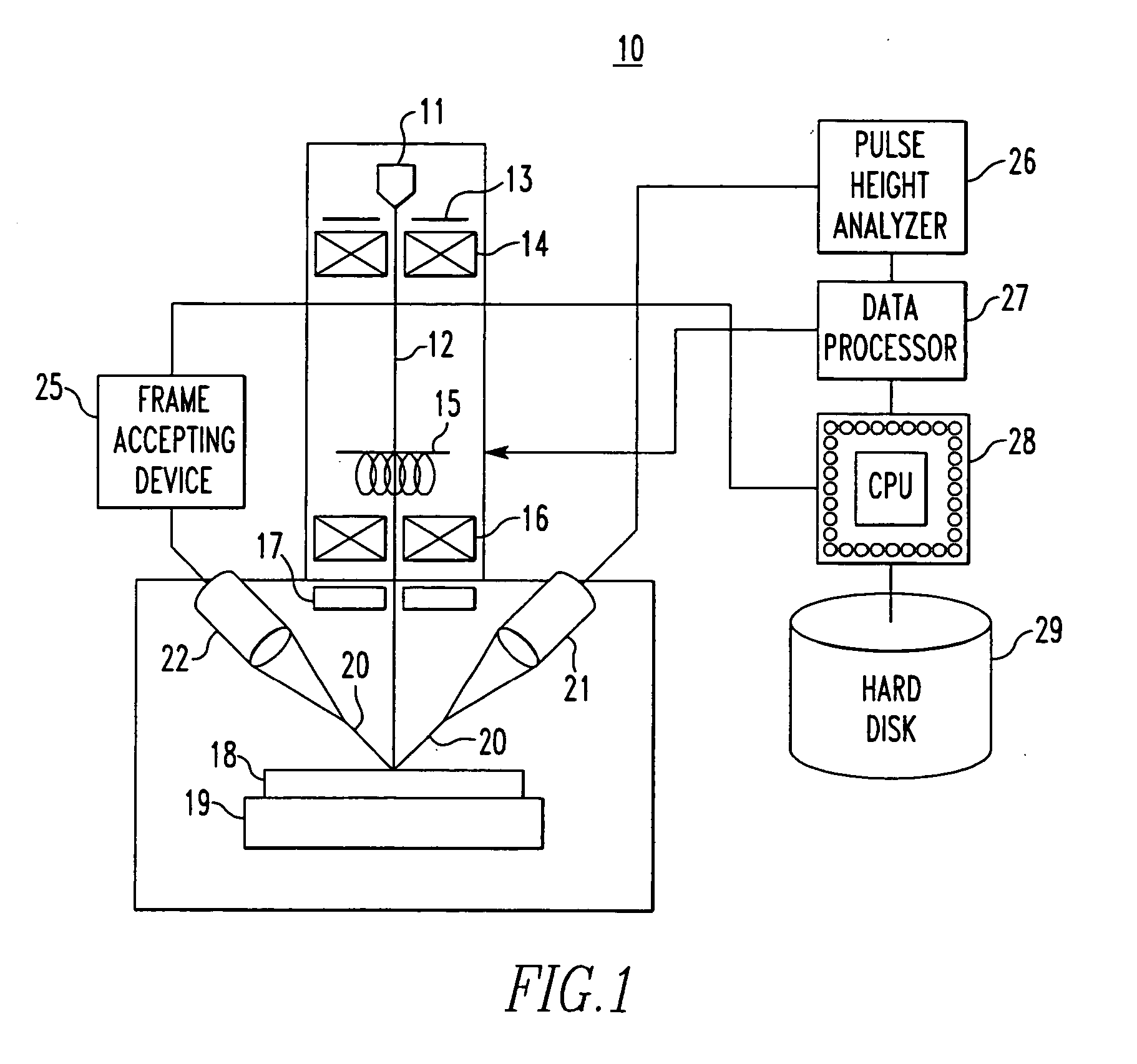Method for obtaining and processing surface analysis data
a surface analysis and data technology, applied in the direction of material analysis using wave/particle radiation, material analysis by measuring secondary emission, instruments, etc., can solve the problems of not being able to measure the correct variation occurring, impossible to perform the same measurement at the same location, and impossible to derive data that would be identical with the data obtained
- Summary
- Abstract
- Description
- Claims
- Application Information
AI Technical Summary
Benefits of technology
Problems solved by technology
Method used
Image
Examples
Embodiment Construction
[0029] The preferred embodiments of the present invention are hereinafter described with reference to the accompanying drawings.
[0030]FIG. 1 is a diagram of a surface analysis instrument according to one embodiment of the present invention. The surface analysis instrument consists of an electron probe microanalyzer (EPMA), generally indicated by reference numeral 10. The instrument has an electron gun 11 emitting an electron beam which is directed at a sample to produce secondary rays (X-rays in this embodiment) from the sample. The secondary rays are spectrally analyzed by an energy dispersive X-ray spectrometer (EDS) 21. The obtained spectrum is analyzed, reproduced, and displayed on a display device (not shown) by a pulse height analyzer (PHA) 26 (described later) forming a computer, a data processing circuit 27, and a CPU 28. The display device is connected with the CPU 28. It is assumed that the recorded energies of photons are described as a function of time.
[0031] The elect...
PUM
 Login to View More
Login to View More Abstract
Description
Claims
Application Information
 Login to View More
Login to View More - Generate Ideas
- Intellectual Property
- Life Sciences
- Materials
- Tech Scout
- Unparalleled Data Quality
- Higher Quality Content
- 60% Fewer Hallucinations
Browse by: Latest US Patents, China's latest patents, Technical Efficacy Thesaurus, Application Domain, Technology Topic, Popular Technical Reports.
© 2025 PatSnap. All rights reserved.Legal|Privacy policy|Modern Slavery Act Transparency Statement|Sitemap|About US| Contact US: help@patsnap.com



